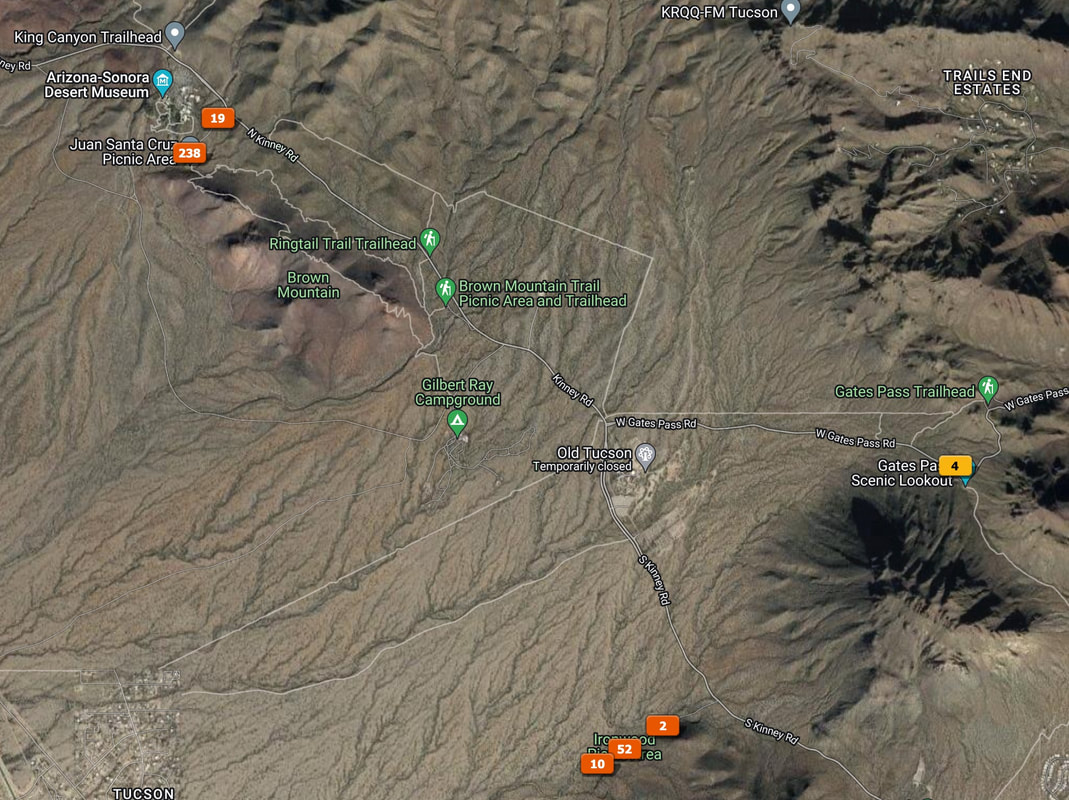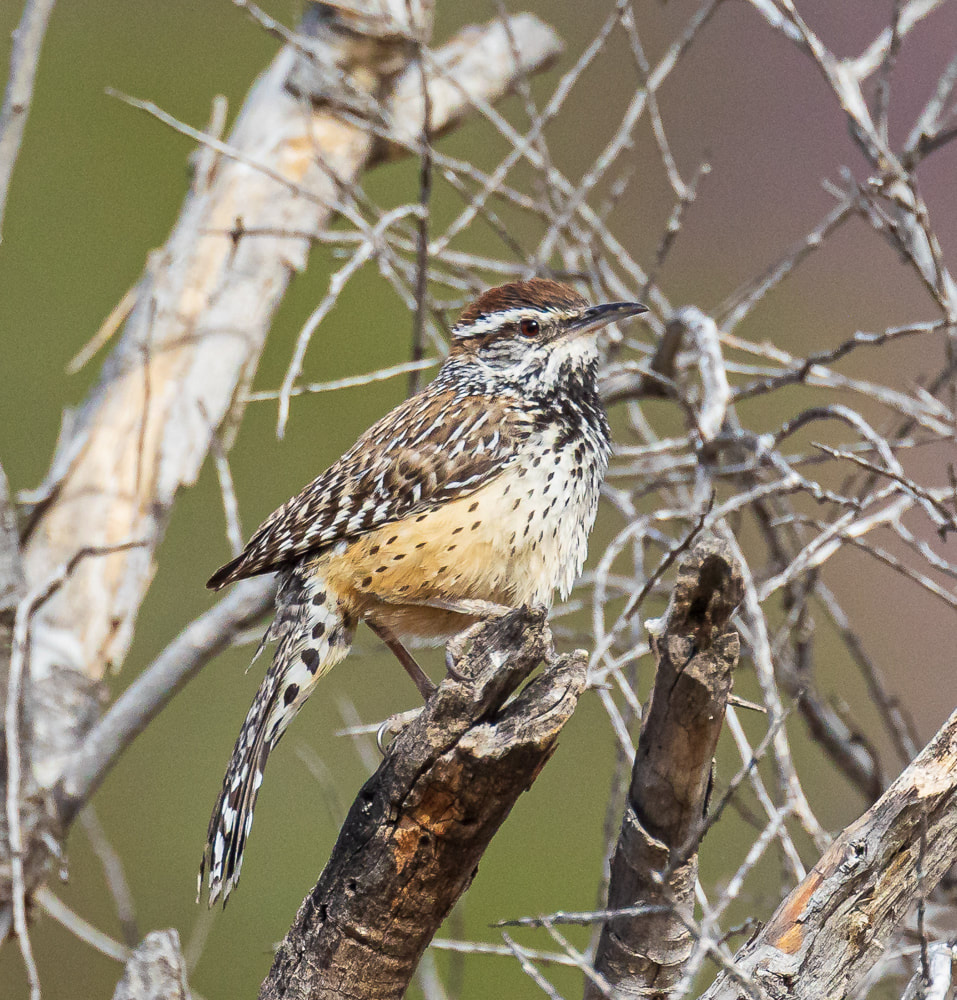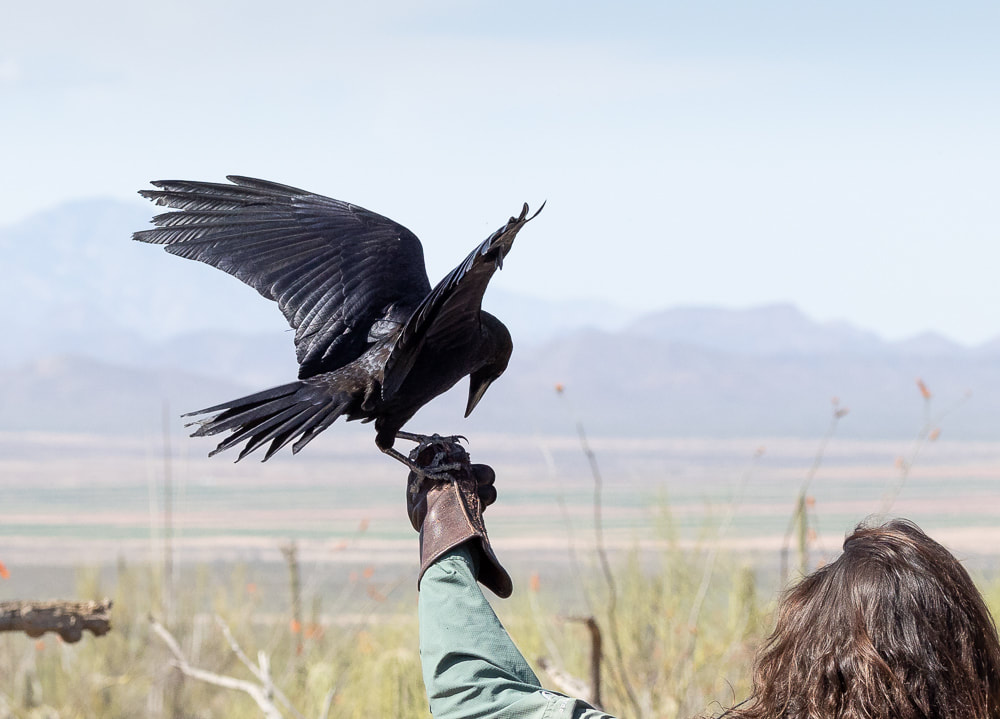|
Ash-throated Flycatcher, Tucson Mountain Park, March 29, 2022. Canon R6, RF 800mm f/11, 1/2000 sec., ISO 1250. We visited Tucson Mountain Park on January 6th, and I posted to this blog on the 21st. January has now given way to late March and the coming of spring to the Sonoran desert. For reference, below is a map of Tucson Mountain Park, a Pima County Park of ~20,000 acres to the west of Gates Pass. The park property includes Old Tucson (currently closed because of covid) and the Arizona-Sonoran Desert Museum. On January 6th we went birding with Jeff Babson as part of a Pima County program at the Ironwood Picnic area, shown by the three orange squares (representing the locations of photographs) at the bottom of the map. On Tuesday March 29th we returned for another tour with Jeff, this time in the Juan Santa Cruz Picnic area, at the top left of the map, right next to the Arizona-Sonora Desert Museum. Both maps from Adobe Lightroom Classic CC. For the photo geeks: If your camera has a GPS chip (geolocator) you can stamp each image with the location, as well as the date and time. LR Classic CC has a mapping function that takes this information and maps where you took each photo. Note that the Canon R6 does not have a GPS chip (nor does the R5) but I have added a Canon accessory that fits on the hot shoe and does the same thing. The map below is an enlargement of the Juan Santa Cruz area, showing more the detail of our route on the 29th. The photograph below was captured by my wife, DJ, as we were driving into the park, coming down from Gates Pass. We see a forest of Saguaro cactus on acres of rolling desert, surrounded by mountains. We are fortunate that this is a county park. I captured the image below as we started our walk. The forecast was for rain all day long, with thunder storms. However, we got lucky and stayed dry while central Tucson got drenched! Our first sighting of the morning was a Turkey Vulture, recently returned from wintering in Mexico, looking for something dead, but not too rotten, for breakfast. Canon R6, RF 800mm f/11, 1/500 sec., ISO 1600. Next, our first big songbird sighting for the day was a . . . Ash-throated FlycatcherCanon R6, RF 800mm f/11, 1/2000 sec., ISO 1600. Ash-throated Flycatchers are songbirds (Order: Passeriformes) in the family Tyrannidae, also knows as Tyrant Flycatchers. All About Birds lists 32 species in the U.S. For their list and photographs click here: All About Birds: Tyrant Flycatchers. For more on the challenges of identifying members of this family, see Kenn Kaufman's book Field Guide to Advanced Birding, chapters 25 and 26, or for a short introduction, this web page Arizona-Sonora Desert Museum, Tyrant Flycatchers. Ash-throated Flycatchers winter in coastal Mexico and Central America, breeding north into western Texas, SE Arizona, New Mexico, Colorado, Nevada and California. Year round populations live in Mexico and western Arizona. See the range map below from the Cornell website, All About Birds. This bird has likely arrived recently from Mexico either heading north, or here for breeding. They are desert dwellers, liking dry scrub and open woodlands from sea level up to about 9,000 feet. They will live near oak, juniper, pinyon pine, Joshua tree, yucca, palo verde, mesquite, acacia and ironwood. They nest in existing cavities in standing dead trees, or those created in prior seasons by woodpeckers. (Ref: All About Birds). Ash-throated Flycatchers eat spiders and insects of a wide range, including wasps and bees. They can also eat small fruits from cardon, saguaro and mistletoe. On the 29th we spotted this bird at some distance, moving very fast in the understory and foraging on the ground for insects. Ash-throated Flycatchers will also perch out in the open to find and catch insects on the fly. Canon R6, RF 800mm f/11, 1/2000 sec., ISO 1250. Ash-throated Flycatchers are slender with a long tail, a peaked crown, and an ashy gray face with a whitish throat. Canon R6, RF 800mm f/11, 1/2000 sec., ISO 5000. The 2 images below are not the sharpest, but show typical markings on the wings and tail. The primary feathers have cinnamon edges and the tail shows a cinnamon stripe that does not reach the tip of the tail. Males and females look similar. Canon R6, RF 800mm f/11, 1/2000 sec., ISO 2000. Canon R6, RF 800mm f/11, 1/2000 sec., ISO 8000. Black-throated SparrowCanon R6, RF 800mm f/11, 1/2000 sec., ISO 1000. Black-throated Sparrows are desert dwellers living year round in SE Arizona, as well as portions of California, Texas and much of Mexico. They prefer semiopen areas with evenly spaced shrubs and trees. They breed to our north into Nevada and Utah, nesting in shrubs often on the north or east side to maximize morning sun and afternoon shade. They eat insects and seeds. Like the flycatcher, this sparrow was busy foraging for food in the low understory. Canon R6, RF 800mm f/11, 1/2000 sec., ISO 4000. Cactus Wren: Spring NestingCanon R6, RF 800mm f/11, 1/2000 sec., ISO 2500. Cactus Wrens are ubiquitous throughout the deserts of SE Arizona, and on this day we were surrounded by them on our walk along the road. It is March, and definitely nesting time. In the image below, we see two birds, possibly a breeding pain near one of the nests. Males and females look alike. Canon R6, RF 800mm f/11, 1/1000 sec., ISO 2500. The female selects the nest site and begins building, with the male joining her to help out. The nests are built of coarse grass and plant fibers and lined with feathers. They have tunnel shaped entrances with very small openings to discourage predators. The nest below is between two Saguaro arms. (Ref: All About Birds). Canon R6, RF 800mm f/11, 1/500 sec., ISO 400. We spotted this second nest, below, within a Cholla. In the second frame, one of the birds appears to be working on nest construction. In the third frame the bird's face is just barely apparent looking out at the camera. Canon R6, RF 800mm f/11, 1/2000 sec., ISO 3200. Canon R6, RF 800mm f/11, 1/2000 sec., ISO 2500. Canon R6, RF 800mm f/11, 1/2000 sec., ISO 3200. Ravens: 2 Species in the Same Neighborhood . . .On April 4th we returned to the Arizona-Sonora Desert Museum for their raptor free flight demonstration, which led off with 2 Chihuahuan Ravens. I could not resist taking some of those images and adding them to the Common Raven we saw on March 29th. Common RavenCanon R6, RF 800mm f/11, 1/2000 sec., ISO 6400. Common Ravens are, believe it or not, songbirds, in the order Passeriformes, family Corvidae. There are 16 species in this family in North America, including Ravens, Crows, Jays and Magpies. They are well known for their advanced problem solving skills and the ability to use tools to get at food. Other members of this family we see in SE Arizona include Steller's Jays, Mexican Jays, and seen here, the ravens. For more on taxonomy see All About birds, Browse by Taxonomy. Common Ravens live year round throughout Alaska, most of Canada and the western U.S., down into Mexico and portions of Central America. They will eat almost anything, including carrion. Their menu preferences provided by the Cornell website is too good to pass up. "Common Ravens will eat almost anything they can get hold of. They eat carrion; small animals from the size of mice and baby tortoises up to adult Rock Pigeons and nestling Great Blue Herons; eggs; grasshoppers, beetles, scorpions, and other arthropods; fish; wolf and sled-dog dung; grains, buds, and berries; pet food; and many types of human food including unattended picnic items and garbage." Common Ravens live in nearly any habitat. They do well around human populations, including farms and rural settlements. In more urban areas they may be replaced by American Crows. (Note that crows live nationwide in the U.S., but north of SE Arizona. ) They nest on cliffs, trees, power line towers, telephone poles, billboards, and bridges. Canon R6, RF 800mm f/11, 1/2000 sec., ISO 6400. This Common Raven was spotted on a snag not far from the road, and between us and the desert museum. They are large birds, described as massive on the Cornell website, with a thick neck, shaggy throat feathers, and a sharp beak. Chihuahuan Raven: Raptor Free Flight April 4, 2022Canon R6, RF 100-500 at 100mm, 1/4000 sec., f/7.1, ISO 500. The Arizona-Sonora Desert Museum has 2 Chihuahuan Ravens in residence, both birds rescued and unable to be return to the wild. Chihuahuan Ravens are smaller than Common Ravens, with longer nasal bristles and white bases to the body feathers. These characteristics may be difficult to distinguish in the field, unless both species are side by side. Chihuahuan Ravens live in the southern central U.S. and Mexico, including Texas, New Mexico and portions of Arizona. They prefer hot, dry, open country with grasslands, generally away from urban populations. So, most of the ravens we see in and around Tucson are Common Ravens, with the Chihuahuan population more commonly seen out on the desert. In the image above, one of the ravens lands on a handler's glove, looking for some food. Below, the bird in profile. This bird has a radio tracking device in case he strays too far away, evident as the fine black line coming off of his back. Canon R6, RF 100-500 at 254mm, 1/4000 sec, f/7.1, ISO 1600. Canon R6, RF 100-500 at 100mm, 1/4000 sec, f/7.1, ISO 1250. In the images above and below we can see the primary and secondary feathers of the wings, the shape of the tail, and the length of the bill as the bird lands on the handler's glove. Canon R6, RF 100-500 at 254mm, 1/4000 sec, f/7.1, ISO 1250. Canon R6, RF 100-500 at 254mm, 1/4000 sec, f/7.1, ISO 1250. That's it for Tucson Mountain Park! More coming soon.
Happy Trails!
0 Comments
Leave a Reply. |
AuthorHenry Johnson, photographer and author of this site. For more detail, see About
Categories
All
Archives
July 2024
|




























 RSS Feed
RSS Feed